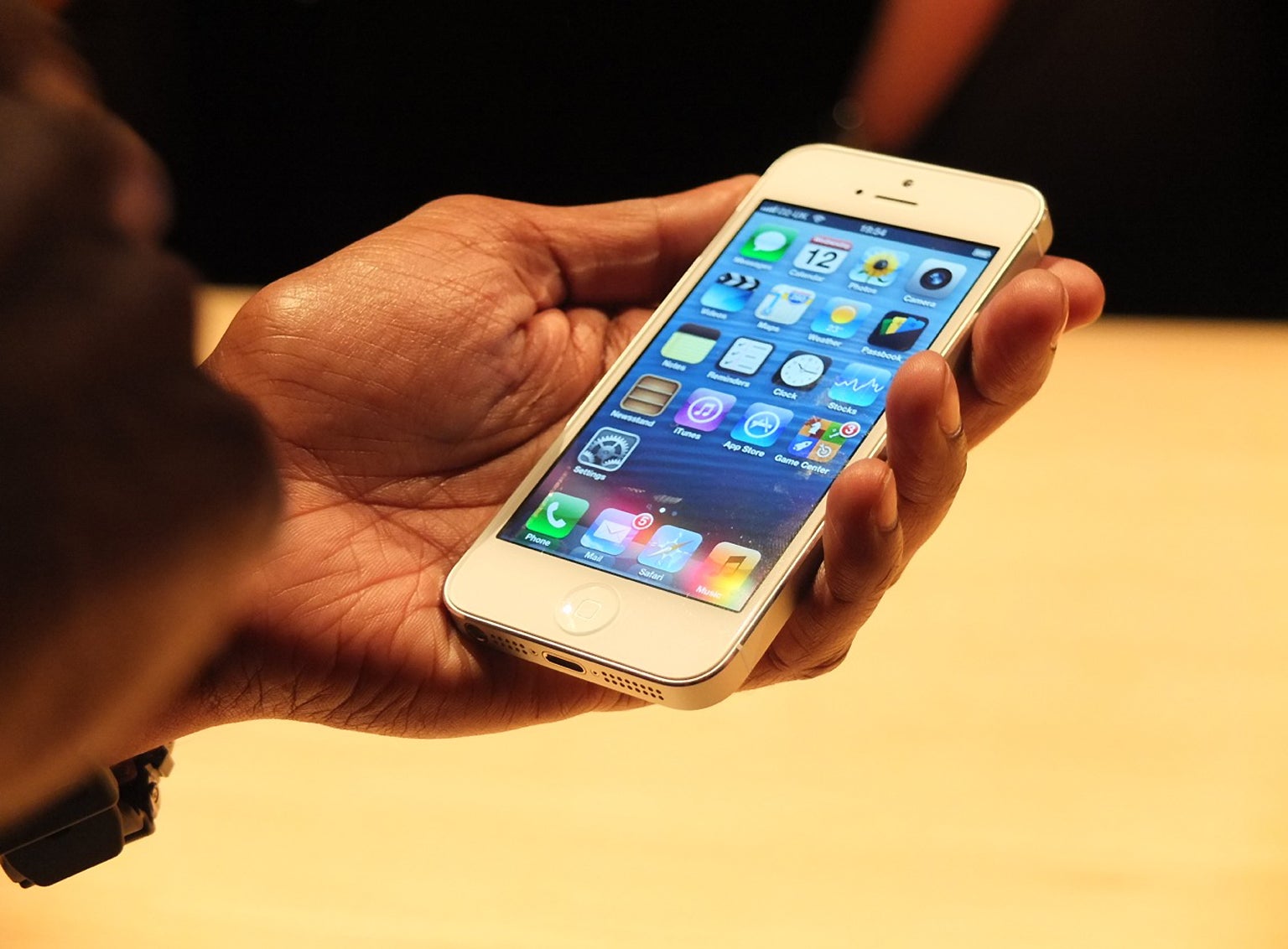Reflecting on the iPhone 5: what were the omissions?
David Phelan stands back from last night's launch hype and ponders the carping

Your support helps us to tell the story
From reproductive rights to climate change to Big Tech, The Independent is on the ground when the story is developing. Whether it's investigating the financials of Elon Musk's pro-Trump PAC or producing our latest documentary, 'The A Word', which shines a light on the American women fighting for reproductive rights, we know how important it is to parse out the facts from the messaging.
At such a critical moment in US history, we need reporters on the ground. Your donation allows us to keep sending journalists to speak to both sides of the story.
The Independent is trusted by Americans across the entire political spectrum. And unlike many other quality news outlets, we choose not to lock Americans out of our reporting and analysis with paywalls. We believe quality journalism should be available to everyone, paid for by those who can afford it.
Your support makes all the difference.It’s tough being Apple. Sure, you’re the most valuable company in the world, and, yes, nearly all your products sell out, but how annoying must it be when, after every presentation, Twitter is ablaze with people carping about how disappointed they are with the new iPad/iPhone/iPod?
This was the experience last night when there were complaints that it looked too much like last year’s model, or that it wasn’t unexpected enough (though, to be fair, so many roughly-correct images had leaked on to the internet, it was hard to have the element of surprise).
There were grievances that it didn’t feature NFC, the contactless data transfer system familiar to Oyster card users in London and door-entry ID card users around the world.
Ultimately, many users would always have been disappointed with the announced phone, unless perhaps it had an anti-gravitational device built in. Which would be nice.
But Apple’s resolute silence about future products works both ways. The company is mad about confidentiality (it could teach North Korea a thing or two about keeping things secret) but while this means the anticipation can build of its own accord, it means that it’s hard for Apple to steer people away from wrong expectations – like NFC.
Actually, what’s more interesting is that the NFC bandwagon, which really hasn’t taken off, is probably stalled for another year. It first appeared on the Google Nexus S, and the phone came and went without a single mainstream application for it.
BlackBerry has big plans for the technology, Sony, Samsung, HTC and Nokia put it in their flagship handsets, but still there are few practical uses for it so far. Apple’s decision not to include it may have been for space reasons in the thinnest smartphone in the world, or it may be it just didn’t think that NFC is important.
After all, it has PassBook which will work in a similar way to some NFC functions – and it seems likely there will be support from stores with loyalty cards, airlines and ticket sellers to create a digital wallet without the need for NFC.
What were the other omissions? With many smartphones available in lots of colours, maybe Apple could venture into new shades? I’ve personally been pushing for a discreet limited edition midnight blue, but to no avail. Still, the arrival of beautifully colourful iPod touch and nano models opens the way for some iPhone colours. One day.
The iOS still doesn’t have widgets or dynamic tiles. This is true, the app icons don’t change as they do in Android or Windows Phone. Actually, there’s one exception to that – the Calendar app icon changes on a daily basis. Apple’s iOS is older than rival smartphone software, so it could justifiably be looking a bit old. And maybe that will change one year. But one of the reasons people upgrade from one iPhone to another iPhone is that the OS is reassuringly familiar, there isn’t a whole new set-up to learn. Windows Phone is hoping that when Windows 8 launches it will make its distinctive system more appealing. For now, though, iOS with it’s 700,000 apps, has plenty of life left in it.
Last week Nokia launched two phones capable of wireless charging. Apple has no interest in this, though it did change the connector – a move nobody would have been clamouring for and which doubtless made speaker dock manufacturers around the world facepalm at their now-incompatible products. Not all of them, of course. Speakers with AirPlay were okay, as were those with Bluetooth built in, like the excellent Jawbone Big Jambox, for instance.
I mean, this change was going to happen sooner or later and was always going to be an upheaval. But the smaller dock is better and there’s no faffing around getting the cable the right way up any more.
Last year, the tickbox of demands from Apple fans included a better camera, faster processor, better signal strength. Apple delivered all of them but the first reaction to the iPhone 4S was utter disappointment, mostly because the design hadn’t changed and it wasn’t called the iPhone 5. Even so, it went on to sell more handsets than all previous iPhones combined.
Last night’s disappointment was much less pronounced, and when punters get to feel it in their hands, it may turn their uncertainty into desire. Whatever, it’s still likely to be the biggest-selling iPhone yet.
Join our commenting forum
Join thought-provoking conversations, follow other Independent readers and see their replies
Comments